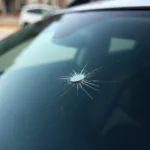Power windows have become a standard feature in modern vehicles, offering convenience and comfort. However, like any other car part, they can malfunction, leaving you with a window stuck in an undesirable position. If you’re dealing with a faulty automatic car door window, this comprehensive guide will provide you with valuable insights into the common causes, troubleshooting tips, and repair options.
Understanding the Mechanics of Automatic Car Windows
Before delving into the intricacies of automatic car door window repair, it’s essential to grasp the basic mechanics involved.
A network of components work together to raise and lower your window at the push of a button:
- Window Regulator: This mechanism, often a cable-driven system or a gear-and-rack setup, moves the window glass up and down within the door frame.
- Window Motor: An electric motor provides the power to drive the window regulator. When you activate the window switch, the motor is energized, rotating in the desired direction to move the window.
- Window Switch: Located on the driver’s side door panel, and often on other doors as well, these switches control the flow of electricity to the window motor, dictating the window’s movement.
- Wiring and Electrical Components: A network of wires and electrical connectors relay the signals from the switch to the motor, ensuring the system functions as intended.
Common Causes of Automatic Car Window Problems
Various factors can contribute to automatic car window malfunctions. Understanding these common culprits can help you narrow down the issue and seek appropriate solutions.
- Faulty Window Regulator: Over time, the window regulator can wear out. The cables can fray, break, or become misaligned, while gears can become stripped or damaged, hindering the window’s movement.
- Malfunctioning Window Motor: Like any electric motor, the window motor can burn out due to overuse, electrical issues, or general wear and tear.
- Window Switch Failure: Continuous use, exposure to the elements, and spilled liquids can lead to the failure of window switches. Defective switches might send intermittent signals or no signal at all, affecting window operation.
- Wiring Problems: Damaged or corroded wires within the door can disrupt the electrical flow, preventing the motor from receiving power or signals from the switch.
- Bad Window Seal: While not directly related to the window’s mechanical operation, a worn-out window seal can allow water to seep into the door, potentially damaging electrical components and leading to window problems.
Troubleshooting Tips for Automatic Car Windows
If you encounter issues with your automatic car windows, you can try these troubleshooting steps before heading to a mechanic:
- Check the Window Switch: Begin by inspecting the window switch for any visible damage, debris, or sticking. Try cleaning the switch with electrical contact cleaner. If the switch feels loose or broken, it likely needs replacing.
- Inspect the Fuses: Locate your car’s fuse box (usually under the dashboard or in the engine bay) and consult your owner’s manual to identify the fuse associated with the power windows. If the fuse is blown, replace it with a new one of the same amperage.
- Examine the Wiring: Visually check the wiring harness within the door for any signs of damage, fraying, or corrosion. Pay close attention to the areas where the wiring bends when the door is opened and closed. If you find any damaged wires, repair or replace them.
- Listen for Motor Sounds: When you activate the window switch, listen carefully for any sounds coming from the door. A clicking or grinding noise could indicate a problem with the window regulator, while silence might suggest a faulty motor or a lack of power.
 Troubleshooting Car Window Issues
Troubleshooting Car Window Issues
Automatic Car Door Window Repair Options
Depending on the diagnosed issue, several repair options are available for automatic car door windows.
DIY Repairs
For those mechanically inclined, some repairs, like replacing a window switch or fuse, can be tackled at home with basic tools and online resources. However, more complex repairs involving the window regulator or motor are best left to professionals.
Professional Repair Services
Auto repair shops specializing in car automatic window repair have experienced technicians and the right equipment to diagnose and fix a wide range of power window issues.
- Window Regulator Replacement: If the window regulator is faulty, the entire unit typically needs replacement. This involves removing the door panel, carefully detaching the old regulator, and installing a new one.
- Window Motor Replacement: A malfunctioning window motor will need to be replaced with a new one. Similar to regulator replacement, this involves accessing the motor within the door and making the necessary electrical connections.
Cost of Automatic Car Door Window Repair
The cost of automatic car door window repair can vary depending on several factors, including:
- Make and Model of Your Car: Different vehicles have varying complexities and part costs, influencing the overall repair expense.
- Severity of the Issue: Simple repairs like switch replacements are generally less expensive than more involved procedures like regulator or motor replacements.
- Labor Costs: Labor charges can differ based on the mechanic’s hourly rate and the time required for the repair.
On average, you can expect to pay between $150 and $400 for automatic car door window repair, with parts accounting for a significant portion of the cost.
Preventing Future Problems
Taking proactive measures can help prevent future issues with your automatic car windows:
- Regular Cleaning: Keep the window tracks and channels free of dirt, debris, and lubrication buildup. This helps ensure smooth window movement and reduces strain on the regulator.
- Avoid Forcing the Window: Never force a stuck window to move. If the window encounters resistance, stop immediately to prevent further damage.
- Address Issues Promptly: If you notice any signs of window problems, like slow movement, unusual noises, or a tilted window, have them addressed sooner rather than later to prevent more costly repairs down the line.
When to Seek Professional Help
While some DIY troubleshooting can be helpful, it’s crucial to seek professional help if:
- You’re uncomfortable working on your car’s electrical system.
- The troubleshooting steps don’t resolve the issue.
- The problem requires specialized tools or knowledge.
Attempting complex repairs without proper expertise can lead to further damage or safety hazards.
Conclusion
Automatic car door windows provide convenience, but when they malfunction, they can be a real headache. By understanding the common causes, troubleshooting tips, and repair options outlined in this guide, you’ll be better equipped to handle such situations. Remember, timely maintenance and addressing issues promptly can help extend the lifespan of your power windows and ensure smooth operation for miles to come. For those seeking reliable repair services, consider exploring options for electric window car repair near me.


